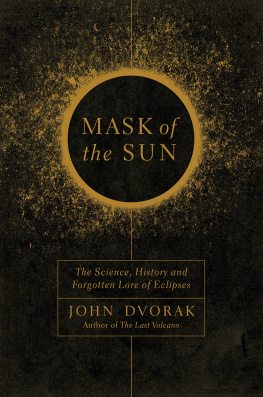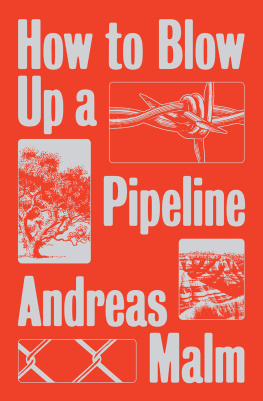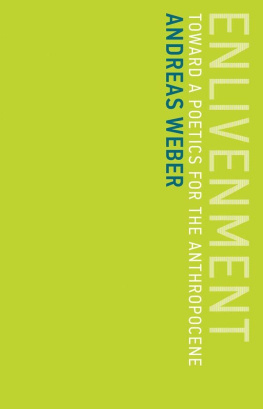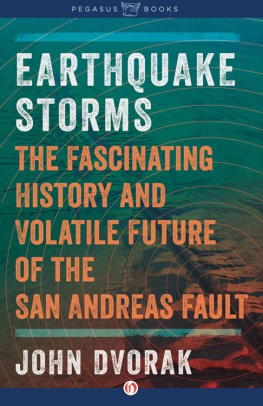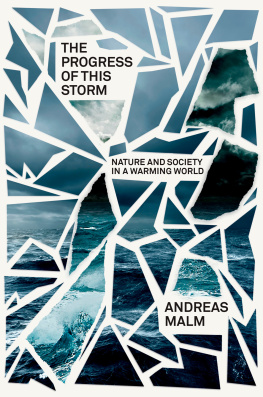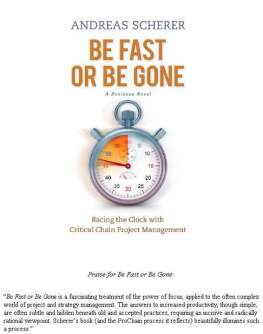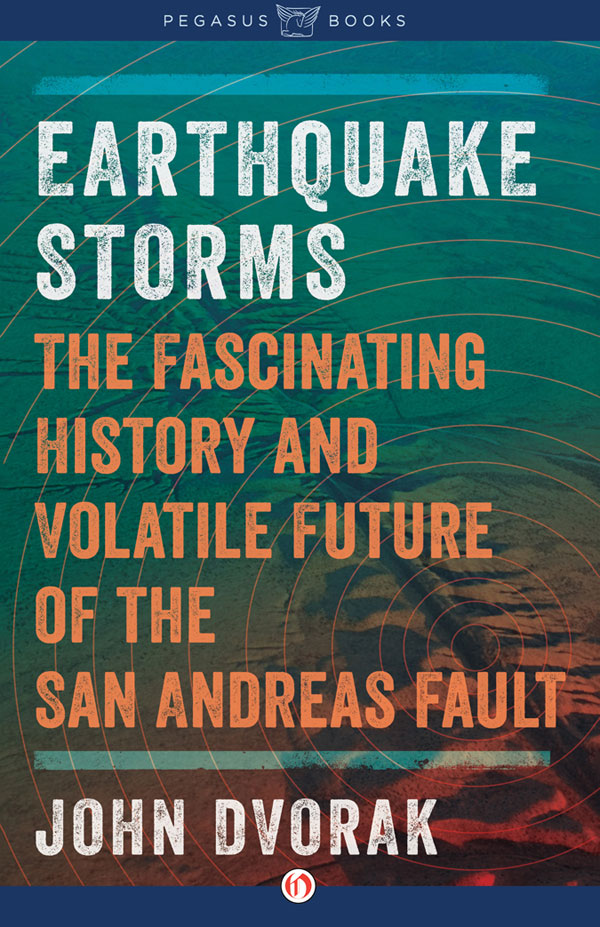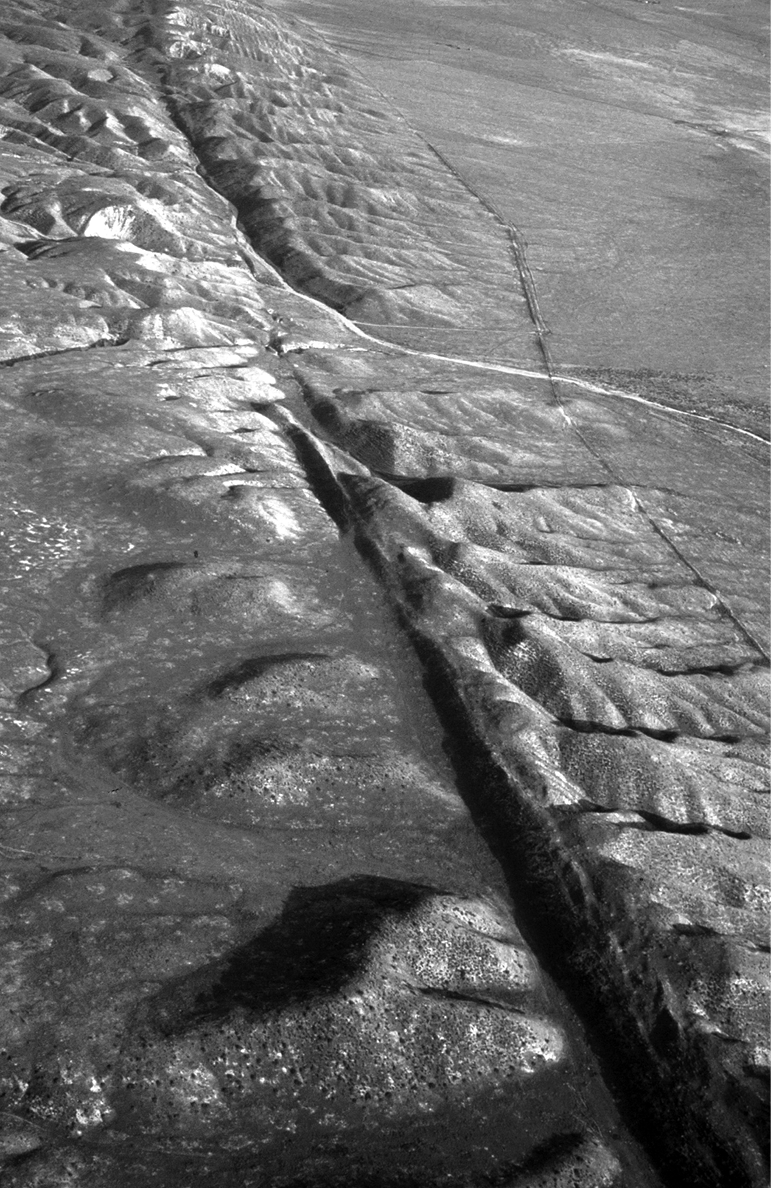Prologue
The Swimmer
Every earthquake is a surprise.
Anonymous
I have often wonderedand enviedat the peculiar way Clarence Judson contributed to the study of earthquakes. A 36-year-old mechanic for United Railroads in San Francisco, he was following a daily routine of rising during the darkness of early morning and, after donning a robe, shoes, and a hat, careful not to wake his wife or two-year-old son or twin infant daughters, setting out for a brisk swim in the nearby waters of the frigid Pacific Ocean.
It was mid-April and the walk to the shore was a short one. The Judsons had lived for two years in a modest clapboard house two blocks from the ocean in what was a sparsely settled development known then and today as Ocean Beach.
On his way, Clarence Judson crossed a recently paved road that city planners had designated The Great Highwaya moniker that it still has todaythen climbed over a short ridge of sand dunes and continued down to the beach.
He disrobed at the edge of the water and watched the waves before he entered. They were coming in sideways, in broken sets, the larger ones running up high, then pulling back. Judson later described them as clawing at the beach.
He waded into the water up to his armpits and was ready to swim when a roller, larger than most, lifted him up, then set him down on his feet. A few moments passed and he prepared himself again to swim when, without warning and without any visible disturbance on the water surface, a great slap hit him across his entire body.
The slap stunned him and he started to go under. He struggled and somehow reached the surface just in time to suffer a second slap, then a third.
Now tumbling and his lungs filling with seawater, he fought desperately, able to summon enough energy to drag himself up onto the beach. Then the bizarre and most memorable part of his ordeal began.
Frightened by what had already happened, he tried to run to where his shoes and hat and robe lay, but discovered his legs refused to work. They shuddered uncontrollablyand he thought he must be paralyzed.
Surprised when he could move his legs again, he looked down and saw that the sand directly beneath his feet was filled with a phosphorous glow. Afraid his feet might be burned, he took off running, noticing that each step produced another incandescent strike.
When he reached his clothes, he tried to dress but was thrown down as the ground started to shake violently. This time he realized it was a terrible earthquake. His thoughts shifted to his family and he knew he had to get back to them.
The ground shook for almost a minute. As soon as it ended, Judson rose and dressed and raced back over the ridge of sand dunes and across the new paved road, which he noticed was badly cracked. He ran at top speed, past houses that were now tilted, some having shifted off their foundations.
When he arrived home, he found his wife frantic and his children crying. He tried to calm them, but a rumor soon came from a neighbor that said a giant sea wave might follow the quake. So the Judsons gathered what they could in blankets and, carrying these few possessions, joined other neighbors in an exodus, moving a few dozen blocks inland where they would camp for the next two nights.
As Clarence Judson and his family and their neighbors made their way, they could see dark clouds billowing up a few miles to the east. Later that afternoon, they would learn, as the rest of the world did, that San Francisco had been crippled that morning by a major earthquakeand that, because gas lines had been disrupted and chimneys had collapsed and the pipes that were to feed water to the city had broken, fires were now raging out of control, and the great city, home of nearly half a million, was burning to the ground.

Even today, much that Judson experienced that April morning in 1906the wave slaps, the phosphorescent sandhas not been explained by science, an indication that our understanding of earthquakes is still in its infancy. And yet much has been learned since the infamous San Francisco earthquake, much of that knowledge gained by studying the San Andreas Fault, the same fault that ruptured that morning more than 100 years ago and caused roadways to crumble and houses to lean.
It was only after the 1906 San Francisco earthquake that most scientists finally realized that earthquakes were caused by the sliding of great crustal blocks against each other and not, as many had favored, by subterranean volcanic explosions. Four years after the San Francisco disaster, after a detailed study of the effects of the earthquake had been published, scientists also realized that earthquakes were powered by the release of elastic energy stored within the Earth, though how the energy had accumulated would remain a mystery for another half century. Not until the advent of the theory of plate tectonics in the 1960s would this and many other major mysteries about the Earth be solved.
Plate tectonicsthe idea that the Earths outer shell consists of a dozen or so mobile plates that collide or spread apart or slide horizontally past each otherwould explain why earthquakes are so prevalent in California. In short, the tectonic plate that includes most of the continent of North America is moving, ever so slowly though constantly, westward, while the one that comprises most of the Pacific basin is moving, also at an excruciatingly slow pace, to the northwest. This difference in direction has caused a great fracture to formthe San Andreas Fault. It was movement along a segment of this fault that caused the 1906 earthquake.
Running for 800 miles from the redwood forests of Cape Mendocino southward to the rugged Sonoran Desert on the east edge of the Salton Sea near the border with Mexico, the San Andreas Fault passes beneath dozens of communities and close to two of the nations largest cities, San Francisco and Los Angeles. It lies under major highways, pipelines, and crucial aqueducts. Scores of housing developments have been platted directly over it.
The fault is most readily apparent as an unusual alignment of river systems and valleys. In northern California, the Gualala and Garcia Rivers lie along it. In central California, the fault runs through narrow Bear Valley east of Point Reyes and through the faults namesake, the San Andreas Valley. In the southern part of the state, picturesque Cuddy Valley and Leona Valley and arid Lone Pine Canyon mark its trend. The fault is responsible for the formation of both Cajon Pass and San Gregorio Pass, two vital corridors that link Los Angeles with the rest of North America. It is responsible for several desert oases and its trace can be seen, with a trained eye, from Palm Springs.
The words San Andreas are so well known that they have become synonymous with the stereotypical fast lifestyle that is Californiaand with seismic destructionthough many perceptions about the fault are in error.


